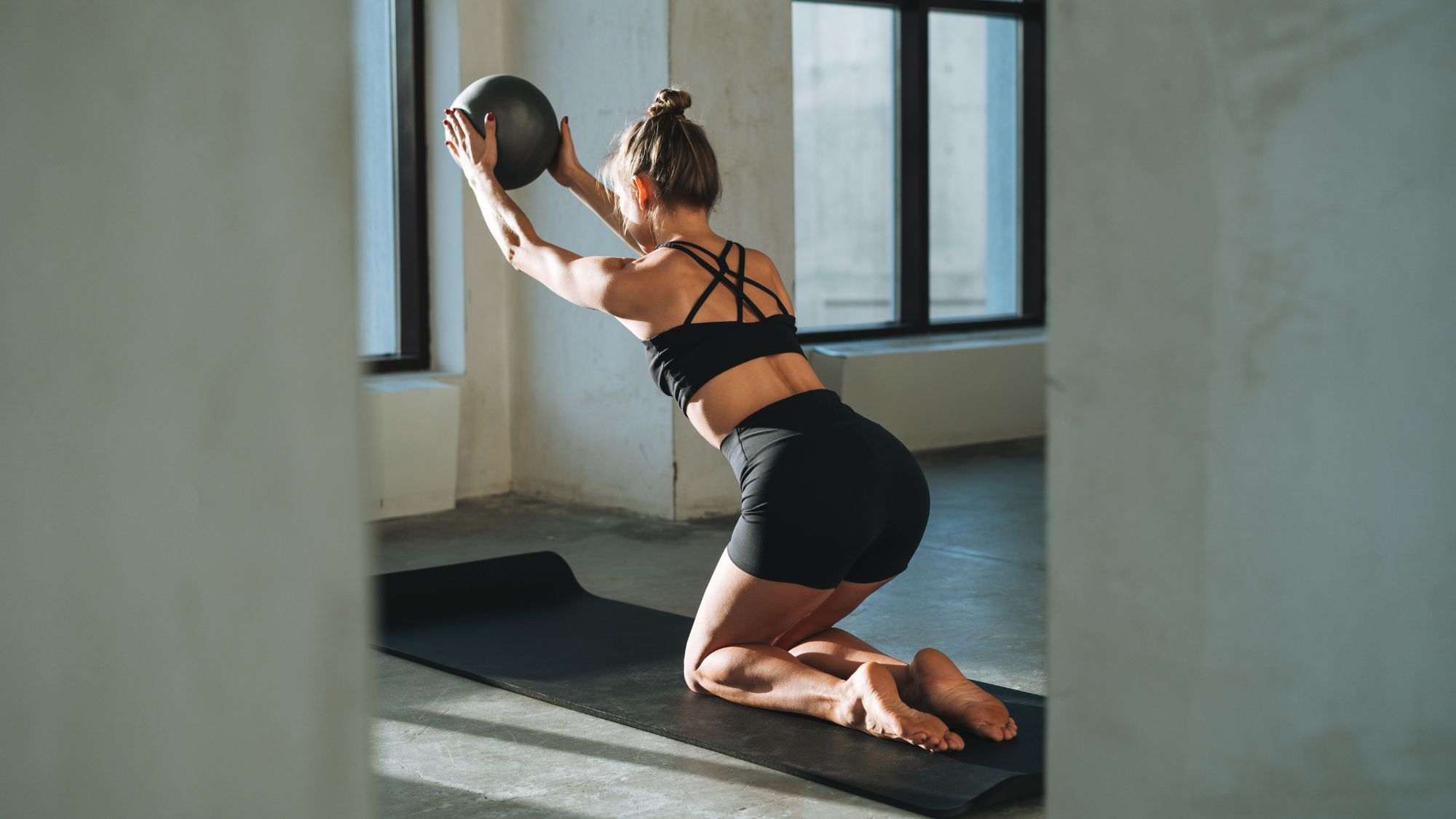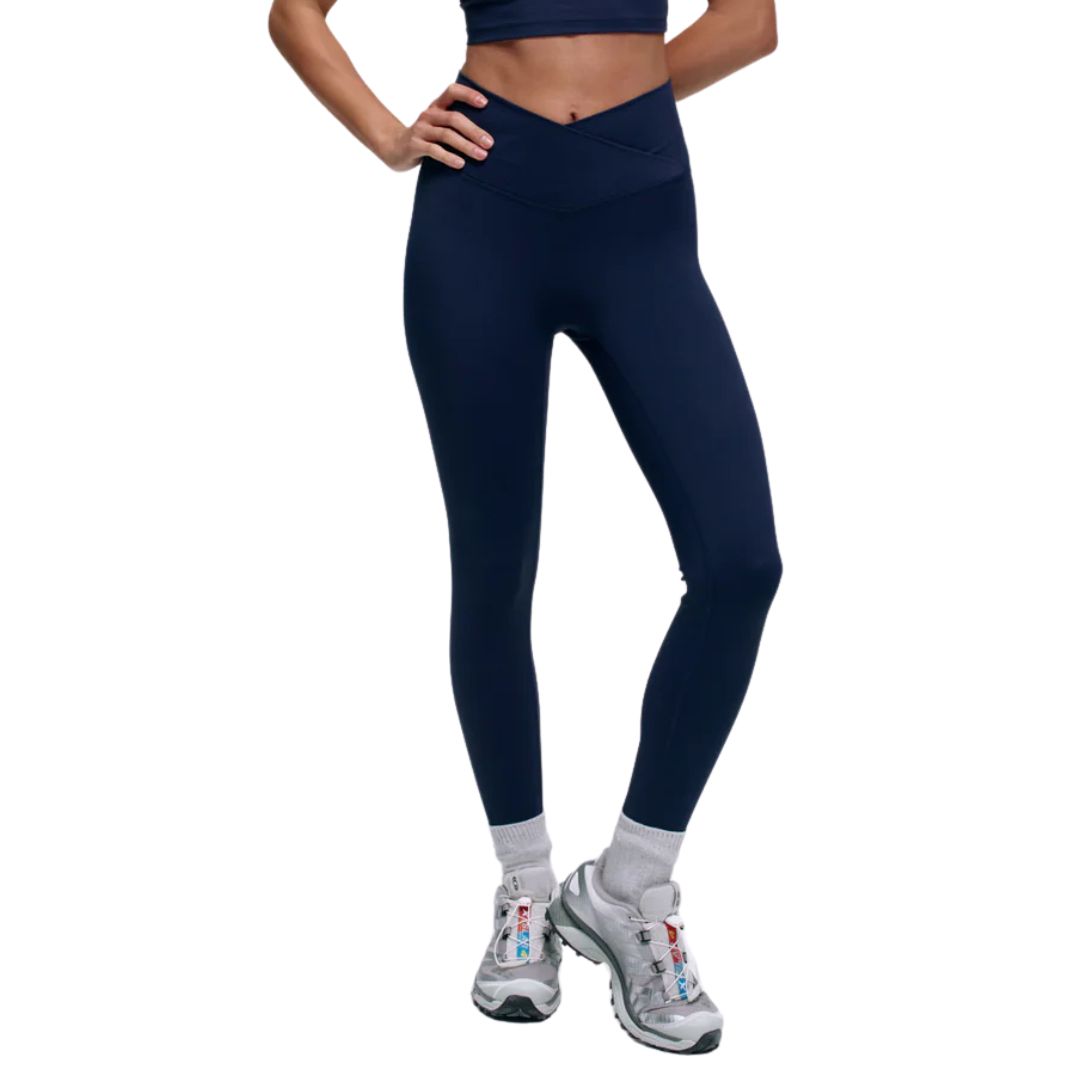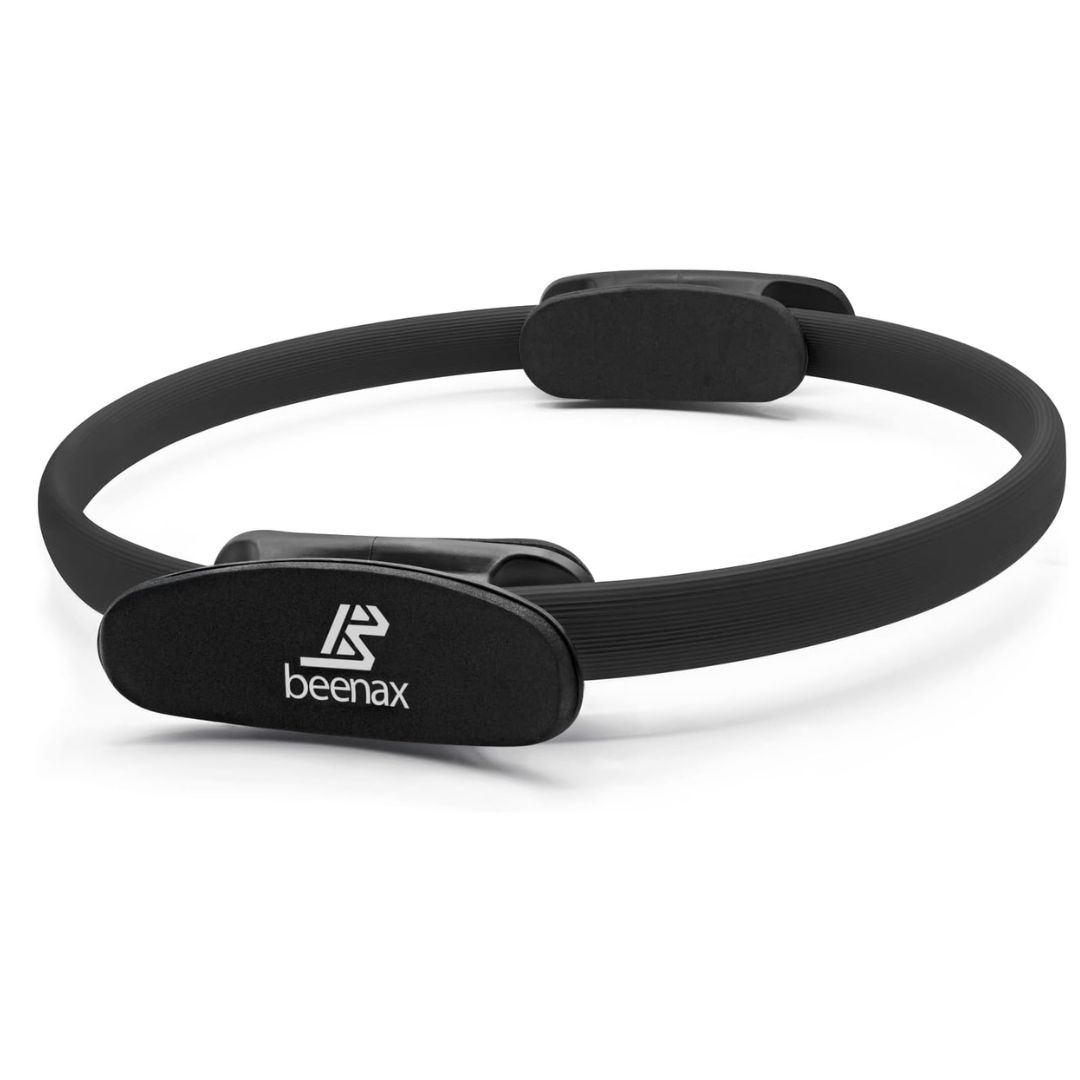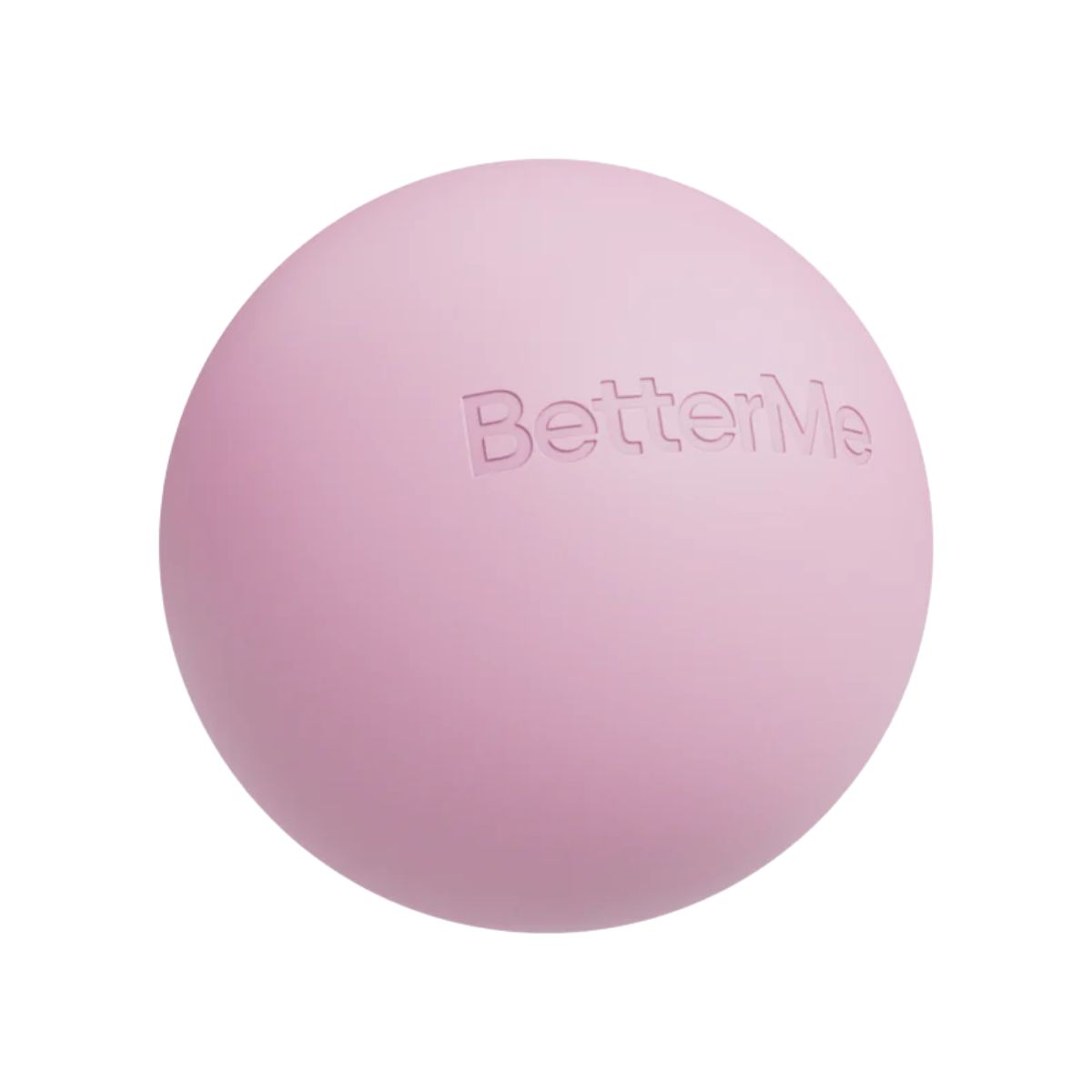I’ve been practising Pilates religiously for over a year and a half - these are the at-home exercises I swear by for boosting flexibility and strength
The fail-safe moves to master.


Like many, I’ve come to love Pilates since I first gave this low-impact workout the space and time it deserves in my fitness routine over a year and a half ago. While I still attend an in-person class - doing so helps me learn the correct form from an instructor, discover new moves and connect with like-minded people - when time and motivation are low, that’s when I turn to the best at-home Pilates exercises to get my fix.
The best at-home Pilates exercises will differ from person to person. Some might favour more dynamic exercises. Others might prefer completing standing Pilates exercises only. And others, myself included, may champion a mix of all the above. It's why moves like Pilates roll-downs, toe-taps, rolling like a ball, the Hundred and glute bridges have become a mainstay in my at-home Pilates routine.
The good news is that no matter where or when Pilates is performed, research confirms that remote practice can be a "good" alternative to in-studio classes, as it can help improve physical fitness and promote a healthy lifestyle by offering a more accessible and less time-consuming option.
And Mia Gianquitto, Pilates instructor at Yatta Studio, agrees, stating: "When performed with proper form and focus, at-home Pilates exercises can be incredibly effective in building strength, improving flexibility, and enhancing body awareness. The beauty of Pilates is that it relies on control and precision, rather than heavy gym equipment."
To help you experience these benefits from the comfort of your own home, we spoke to instructors who shared why these moves are worth performing and exactly how to do them.
Plus, while you're here, do check out what happened when one of our writers tried out a 15-minute Pilates challenge, discover the most effective Pilates workouts at home and scroll through a trainer's go-to 20-minute Pilates workouts, here. Or, if you're new to the practice, don't miss our guides to Pilates for beginners, wall Pilates exercises for beginners, and whether Pilates is hard for beginners.
5 best at-home Pilates exercises, according to top experts
Are at-home Pilates exercises effective?
Despite what social media may have you believe, the great thing about some forms of bodyweight-based fitness like yoga and Pilates is the fact that you don’t really need much (if any) equipment to start. This makes them accessible to the masses and, as experts confirm, an effective form of exercise to complete from home.
Celebrity news, beauty, fashion advice, and fascinating features, delivered straight to your inbox!
"At home Pilates workouts are definitely effective, if you commit to a regular practice", confirms Abby McLachlan, Pilates instructor and founder of Walthamstow-based fitness studio, East of Eden. "And it doesn't need to be a lot - just fifteen minutes a day would be really beneficial."
However, McLachlan says that how effective your at-home workout will be will depend on a few things. "It's important to have good form, so it would be worth combining the at-home practice with some classes with a qualified Pilates teacher, so ensure you have the proper alignment and form," the expert notes.
If that's not possible, McLachlan highlights that there are a number of instructional videos on YouTube that can help you establish correct form. Like the best Pilates YouTube workouts to stream RN or the best 20-minute Pilates workouts to try from home.
Who are at-home Pilates exercises best for?
In a nutshell, at-home Pilates exercises can be ideal for anybody who doesn’t have (or perhaps wants) to head to a studio to work out. This makes at-home Pilates exercise suitable for people who are short on time, or cost is a barrier.
And Gianquitto agrees: "From beginners to more experienced movers, it's especially great for people with busy schedules, those recovering from injury (with guidance), or anyone looking to improve posture, core stability, and overall mobility from the comfort of home."
And, as research has found, everyone from bodybuilders to yogis can benefit from Pilates practice.
How many at-home Pilates exercises should I do a week?
The question we all want to know. Gianquitto recommends aiming for three to five Pilates sessions per week. "That does not mean one hour at a time, even if it's just fifteen to 20 minutes a session," the expert adds. "Consistency is key."
And session-wise, research seems to say the same thing. Both a 2015 study and a 2023 article suggest that two to three sessions a week for twelve weeks will help to boost abdominal strength, endurance and better your hip and shoulder joint mobility.
How do I structure these exercises into a full workout?
It's a good question. Gianquitto recommends completing the sequence below two to three times for a full 20 to 30-minute workout.
- Start with roll-downs to mobilise the spine and connect with your breath
- Move into The Hundred to activate your core and warm up the body
- Follow with Toe Taps for deeper core work
- Next up, try out Rolling Like a Ball for spinal massage and abdominal strength
- Finish with Glute Bridges to activate the posterior chain and release the hips.
Best at-home Pilates exercises, according to pros
1. Pilates roll-downs
What? Pilates roll-downs are a classic move in the Pilates arena where you stand tall and fold forward, articulating through the spine one vertebrae at a time.
Why? "This gentle spinal articulation exercise improves flexibility through the back and hamstrings while encouraging core engagement and postural awareness," Gianquitto says.
How long? 3 reps.
2. Pilates toe taps
What? Toe taps are a move performed lying flat on your back, with your legs raised in a tabletop position, from which you lower alternating legs, 'tapping' your toes to the ground.
Why? "This targets the deep core stabilisers, particularly the transverse abdominis, helping to build strength and support for the lower back," Gianquitto explains.
How long? 10 reps on each side.
3. Rolling Like a Ball
What? An exercise where you sit with your feet lifted and knees bent. You then roll back onto your shoulder blades, engaging your core to control the movement, and then roll back up.
Why? "This is a fun, dynamic move that improves spinal mobility, strengthens the abdominals, and challenges balance and coordination," Gianquitto says.
How long? 5 reps.
4. The Hundred
What? The hundred challenges you to lie on your back, engage your core and curl your neck and shoulders up off the ground while lifting your legs at a 45-degree angle or holding them in a tabletop position. While maintaining this hold, take five short breaths in and five short breaths out, pulsing your arms up and down to the beat of your breaths as you do so. It gets its name - The Hundred 0- because you’ll work up to 100 pumps of your arms, timed with your inhales and exhales.
Why? "The hundred is another core exercise, this one focusing particularly on core endurance, " says McLachlan. "This is a great exercise for establishing core strength, and you can work up to the full expression, starting by bringing the head, neck, and shoulders down on each inhale and having the feet flat on the floor before progressing to tabletop legs."
How long? 10 cycles.
5. Glute Bridges
What? This move will see you lie on your back, and lift your hips up until your core makes a straight line from your knees to your shoulder.
Why? "A glute bridge is another spinal articulation exercise like the roll down, but done from a supine position," McLachlan says. "It strengthens the whole posterior chain as well as the glutes and hamstrings, and can be progressed to single leg, staying up for longer, or use a ball or Pilates ring to add some extra adductor work."
How long? 5 reps.
Shop Marie Claire UK's go-to Pilates kit:

Versatile, super soft and supportive, we really can’t fault these Adanola leggings. Coming with four-way stretch, a compressive active fit and a flattering wrap-over design, these options will see you through an at-home Pilates session, a coffee run and back to your desk again.

Hoping to level up your Pilates practice? Well, the best Pilates rings can help you get there. These magic circles can help to engage muscles in and around the pelvis, improve core strength and give your balance a boost.
What is the 80/20 rule in Pilates?
You might have heard about the 80/20 rule in terms of nutrition, which is all about fueling your body with healthy, nutrient-rich foods 80% of the time, and the remaining 20% is where you allow for occasional indulgences.
But the rule pretty much applies in the Pilates world, too. In Pilates, the 80/20 rule (which is also known as the Pareto Principle) suggests that 80% of your fitness results from this low-impact workout come from 20% of your efforts.

Rebecca, or Becks, is a freelance journalist with more than ten years of experience in the industry. She specialises in all things health and lifestyle and has written for a number of brands including Women's Health, Stylist, the Evening Standard, Good Housekeeping, The Telegraph, Live Science, Tom's Guide and Fit&Well. Becks also writes copy for a number of brands and small businesses.
When she's not weight training, tracking down the best gym leggings, reading a book or at her desk typing away, you'll find her in the kitchen perfecting a new recipe or bake.





